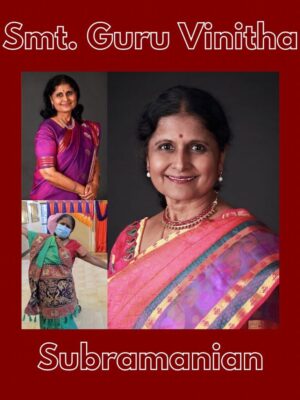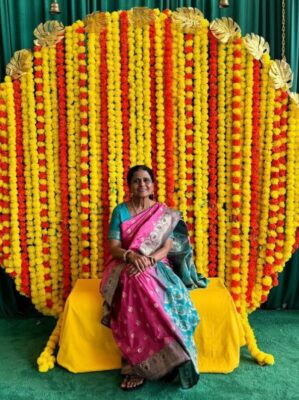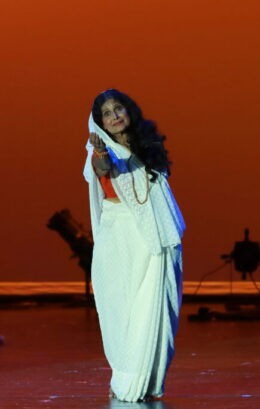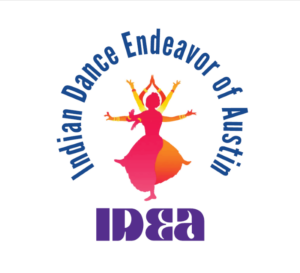Preserving Culture Through Dance: An Interview with Vinitha Subramanian, Founder of IDEA
By Trisha Patel
Dance has always been a huge part of my life, and as I’ve grown, I’ve come to appreciate not just the art itself but the effort it takes to sustain and support it. That’s why I was really excited to sit down with Vinitha Subramanian, the president of IDEA, a nonprofit dedicated to supporting Indian arts in Austin. I wanted to learn more about what inspired her to start IDEA, her vision for the future, and the challenges that come with running a nonprofit in the arts world.
The Beginning of IDEA
I started the conversation by asking Vinitha (fondly referred to as Vinitha Aunty) what motivated her to start IDEA in the first place.
Me: Amrutha told me that you started IDEA, which is this nonprofit, and I wanted to ask—what inspired you to start it? What made you want to start a nonprofit like this?
Vinitha Aunty: Dance is a big, expensive sport. The costs of performances, arangetrams, and even just renting auditoriums can be really high, sometimes unaffordable. I noticed that nonprofits have access to more resources—they can book venues at lower costs and apply for government grants to fund activities that might not otherwise be possible. I saw other groups forming nonprofits and getting access to these kinds of resources, and I realized [our community] needed something similar. That’s how IDEA came about.
That totally made sense to me. I’ve seen firsthand how expensive dance can be, and the idea of making it more accessible is something that really resonates with me.
The Future of IDEA
I wanted to know what Vinitha Aunty envisioned for IDEA in the coming years, so I asked her what her dream goal or project would be.
Me: When you think about the future of IDEA, what’s one big goal you’d love to see accomplished in the next few years?
Vinitha Aunty: I’d love for IDEA to be like what Antarnada is for Carnatic music. Antarnada creates opportunities for young artists and provides spaces for them to perform. Another example is Kaladarpan, which organizes competitions and showcases for youth. But IDEA could be even broader. It could be a platform for all Indian arts—not just classical dance but also painting, sculpture, and even modern art forms.
That was interesting to me because I had always thought of IDEA in the context of dance. But hearing Vinitha Aunty talk about expanding into other art forms made me realize just how much potential it has.
She also talked about another big dream—having a dedicated performance venue for the Indian arts community in Austin.
Vinitha Aunty: There aren’t enough venues for Indian arts performances. We have a couple of temple auditoriums, but that’s not enough. I’d love to see IDEA collaborate with other organizations, like the Austin Hindu Temple, to create a space specifically for Indian performances. Right now, we’re all competing for the same venues, and the costs just keep rising. Having our own space would change everything.
That was a powerful idea. I know from my own experience how hard it is to find a good venue, and having a dedicated space would make things so much easier for dancers and other artists.
The Challenges of Running a Nonprofit
Of course, with big goals come big challenges. I asked Vinitha Aunty what she saw as the biggest obstacles to IDEA’s growth and how she thought they could be overcome.
Vinitha Aunty: One major challenge is that we have so many different arts organizations in Austin, and they’re all competing for the same resources—whether it’s grants, venues, or sponsorships. Instead of working together, we’re often working against each other. One way to fix this would be to create a forum where all these organizations can collaborate and share resources instead of competing.
That got me thinking—what if IDEA could be that platform? A central hub where all these different groups could come together and support each other instead of fighting for the same limited opportunities?
Another big challenge is funding.
Vinitha Aunty: The government isn’t providing as much funding for the arts, and more and more organizations are competing for the same grants. That means we have to find other ways to sustain ourselves—corporate sponsorships, fundraising, and making sure we’re self-sufficient. We can’t just rely on grants if we want to grow.
I could see how tough that must be. The arts are already undervalued when it comes to funding, and without financial support, even the best ideas can struggle to take off.
A Memorable Moment with IDEA
Before wrapping up, I asked Vinitha Aunty if there was a specific moment with IDEA that had really impacted her. She told me about one of the first arangetrams IDEA helped sponsor.
Vinitha Aunty: There was a family looking for a venue for their daughter’s arangetram, and IDEA had been pretty dormant at that point. We hadn’t done much in a while, and I debated whether or not to take on the project. But I decided to go for it, and in the process, we ended up opening doors for other dance organizations to use the same venue. It was a turning point for IDEA—it showed us that we could actually make a difference.
I loved that story because it really highlighted the impact of IDEA. What started as a small decision ended up setting the stage (literally) for so many other dancers.



” Dance is a big, expensive sport. The costs of performances, arangetrams, and even just renting auditoriums can be really high, sometimes unaffordable. I noticed that nonprofits have access to more resources—they can book venues at lower costs and apply for government grants to fund activities that might not otherwise be possible. I saw other groups forming nonprofits and getting access to these kinds of resources, and I realized we needed something similar. That’s how IDEA came about.”

The Role of Indian Dance in Preserving Culture
To end our conversation, I asked Vinitha Aunty about something I think about a lot—the role of traditional Indian dance in preserving our heritage, especially for kids growing up in the diaspora.
Vinitha Aunty: It’s even more important for Indian kids growing up outside of India than it is for those back home. In India, culture is everywhere—you absorb it naturally. But here, if we don’t actively engage with it, we lose it. Dance helps us stay connected to our roots. It’s not just about movement—it’s about history, language, and identity. Without it, we risk forgetting where we came from.
That really hit home for me. Dance isn’t just an art form—it’s a way of preserving who we are. And organizations like IDEA make sure that connection stays strong, not just for us but for future generations.
Final Thoughts
Talking to Vinitha Aunty gave me a whole new perspective on the role of arts nonprofits and the challenges they face. I’ve always loved dance, but now I see the bigger picture—how much effort it takes to keep these traditions alive and make them accessible to everyone.
IDEA isn’t just about performances or arangetrams. It’s about creating a space for Indian arts to grow, evolve, and stay relevant for generations to come. And after this conversation, I’m even more excited to see where it goes next.
